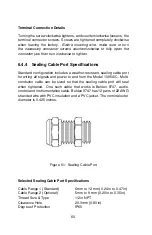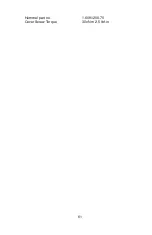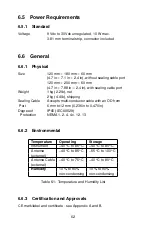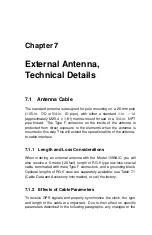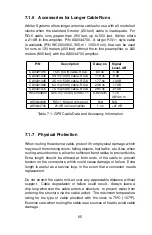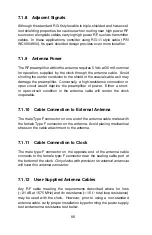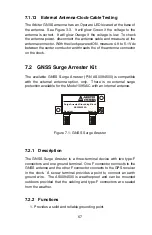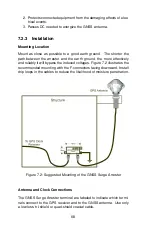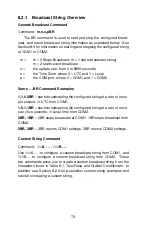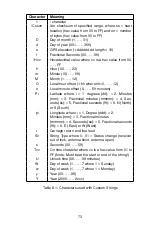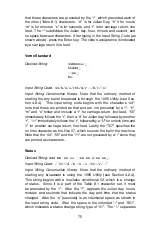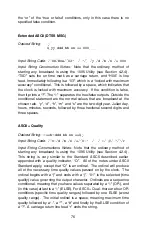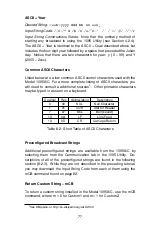
Table 8.1 Notes
Conditionals can use any of the above, with the
exception of /Cssnn and Txx, in addition to any string characters.
Conditionals cannot be nested!
True/False Condition
– /
[
ii
?
< t > /
:
< f > /
]
where:
< t >
= True condition
< f >
= False condition
ii
: 01 Out of
Lock; 02 Status change; 03 Locked with max accuracy; 04 Fault; 05
Daylight Saving Time change pending
Ordinal Condition
– /
{
ii
?
<
0
> /
:
, . . . , < n > /
;
< e >
}
where:
<
0
>, <
1
>, . . . , < n >
= ordinal position
< e >
= Else
condition
ii
: 01 Time Quality (13 possible ordinals); 02 Time Zone
Indicator (3 possible, 0=DST active, 1=Not active, 2=UTC)
8.2.2
String Setup Examples and Tutorial
The examples listed below illustrate how various strings are constructed
using the
@@
A . . .
or
@@
B . . .
commands. This tutorial will build
several strings already defined in the Model 1095A/C as examples to
help you form a custom string of your own. In this way, you can form
an existing string and compare the output with the standard method of
activating that string (i.e. using the 1095 Utility as in Section 4.2.4). For
example, to activate the ASCII Standard broadcast in UTC time zone at
1 broadcast per second from COM1, you would type 1,1,0,0BR.
Three elements are specified throughout the tutorial examples: (1)
The desired output string is shown first, (2) Next, follows the input string
code required to produce the output string, (3) Lastly, you will find some
string construction notes to help you construct a valid input string from
the table of characters shown in Table 8.1, true/false conditions and
ordinal conditions.
ASCII Standard
Desired String:
<
soh
>
ddd:hh:mm:ssC
Input String Code:
@@
A/T01/d:/h:/m:/s/r
Input String Construction Notes:
Note that the ordinary method of start-
ing any serial broadcast is through the 1095 Utility (see Section 4.2.4).
Custom string entry always begins with the
@@
A for strings output from
COM1, or
@@
B for strings output from COM2. Next, the T01 specifies
the on-time character as a Hex 01, which is the Start of Header. Notice
74

